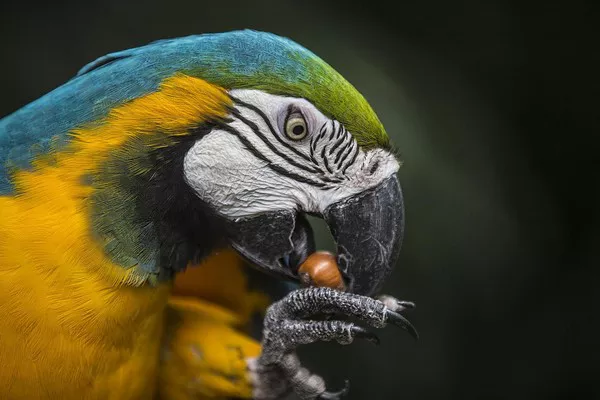What is a Red-necked pond turtle?
The black-necked turtle (scientific name: Mauremys nigricans) is a reptile of the Turtle family and the genus Turtle. The black-necked tortoise is larger, with an adult length of 12-25 cm and a width of about 11-19 cm. The head is medium in size, the front of the back of the head is smooth, and the back half of the head has angular thin scales; the front of the top of the head is smooth, and the back is polygonal thin scales; the snout protrudes from the rostral margin. The back is relatively flat, with obvious ridges; 1 shield neck, bell-shaped; 5 vertebral shields. 4 rib shields. 12 pairs of edge shields. The plastron is flat, almost as long as the carapace, with a flat front edge and a concave rear edge. The nail bridge is obvious, with axillary shield and crotch shield. The limbs are flat and round, the fingers and toes are fully webbed; the tail is medium long. The body is gray-black, the abdomen is brownish-yellow, and the ventral surface of the margin shield and the bridge of the nail are dark-brown. The soft parts of the female glans head, neck and limbs are gray-black; the soft parts of the male beak, neck, limbs and body are orange-red, and the ventral surface of the margin shield and the bridge of the nail are covered with red spots on a dark brown background.
What does a Red-necked pond turtle look like?
The carapace is 123-257 mm long, 110-192 mm wide, and the head is larger, 30.5-61.5 mm wide, about 1/4-1/3 of the carapace width, and some 1/2. The snout is conical, slightly protruding from the upper edge, and the snout end is obliquely cut inward and lower; The carapace is long oval and flat, the posterior margin is slightly wider than the anterior margin; there is an obvious ridge, but no lateral ribs; 1 cervical shield, bell-shaped, small; 5 vertebral shields, occasionally 6, the first One is pentagon, the second to fourth are hexagons, wider than long; 4 pairs of rib shields, 12 pairs of marginal shields, occasionally 11 or 13 pairs, the front and rear edge shields of the body are slightly upturned; Hip shield 1 pair, rectangular. The bridge is broad and obvious, with axillary shield and crotch shield. The plastron is flat, slightly shorter than the carapace, the front edge is straight, and the rear edge is deeply concave, in the shape of “^” or crescent; abdominal shield suture>femoral shield suture><chest shield suture>anal shield suture>laryngo shield suture > Brachial shield suture. The limbs are slightly flat, with several rows of rectangular horny large scales on the forelimbs, and the hind limbs are covered with small scales on the back of the tibialis; the toes are fully webbed. The tail is conical, the tail length of female turtles is about 1/4-1/3 of the carapace length, and the tail length of male turtles and young turtles is about 1/2 of the carapace length.
Habits of Red-necked pond turtle
Black-necked turtles live in subtropical hills and streams in mountain forests. Black-necked tortoises are clumsy, slow to crawl, mild-mannered, and do not take the initiative to hurt people. Black-necked tortoises love warmth and fear cold, and cannot live in a low temperature (temperature lower than 15°C) environment for a long time (more than 3 months). The optimum temperature is 25°C and hibernates when the ambient temperature is around 18°C. Omnivorous, feeding on fish, shrimp and worms, as well as grains. Under artificial feeding, eat lean pork, shrimp, poultry offal and a small amount of vegetable leaves.
Red-necked pond turtle rearing
The ratio of male and female turtles is generally 2:1, and the stocking density is 3.5 turtles/square meter. The ratio of animal feed to plant feed can be roughly set at 7:3. Animal feed should be chopped before feeding and mixed with plant feed. The daily feeding amount is about 5% of the parent turtle’s body weight, which should be flexibly controlled according to the daily climate and observation. When the climate is normal, when the temperature is high, the turtle feeding intensity is strong, so it should be fed more; when the weather changes suddenly, and the air pressure is low, it should be fed less. When it is found that the feed fed in the previous feeding has not been eaten or the animal and plant feed is obviously left over, the feeding amount and animal and plant feed should be adjusted in the next feeding; the feeding time is generally 9:00 every morning. When the turtle is disturbed, the hiding place is mainly underwater, so several floating boards can be fixed in the middle of the pool for the turtle to bask on its back. In summer with high temperature, awning nets should also be set up in land activities. The turtle-friendly pond should be kept clean and hygienic, the weeds on the land activity site should be repaired and removed diligently to avoid excessive growth, and the floating debris in the water should be removed in time to prevent mildew from affecting the water quality. During the mating and laying period, in addition to feeding feed and collecting fertilized eggs every day, some daily operations of the turtle pond should be minimized, and walking around the parent turtle pond should be reduced or avoided at night to avoid interfering with the mating and digging of the parent turtle. Burrows spawn. The escape wall of the turtle pond should be checked frequently to prevent predators, especially during the spawning period, to prevent snakes, rats, livestock, water birds, etc. from interfering with the mating of the turtles and preying on the fertilized eggs. During the breeding process, if sick turtles or dead turtles are found, they should be picked out in time, and the reasons should be found and analyzed, and measures should be taken to prevent the spread of the disease.


























